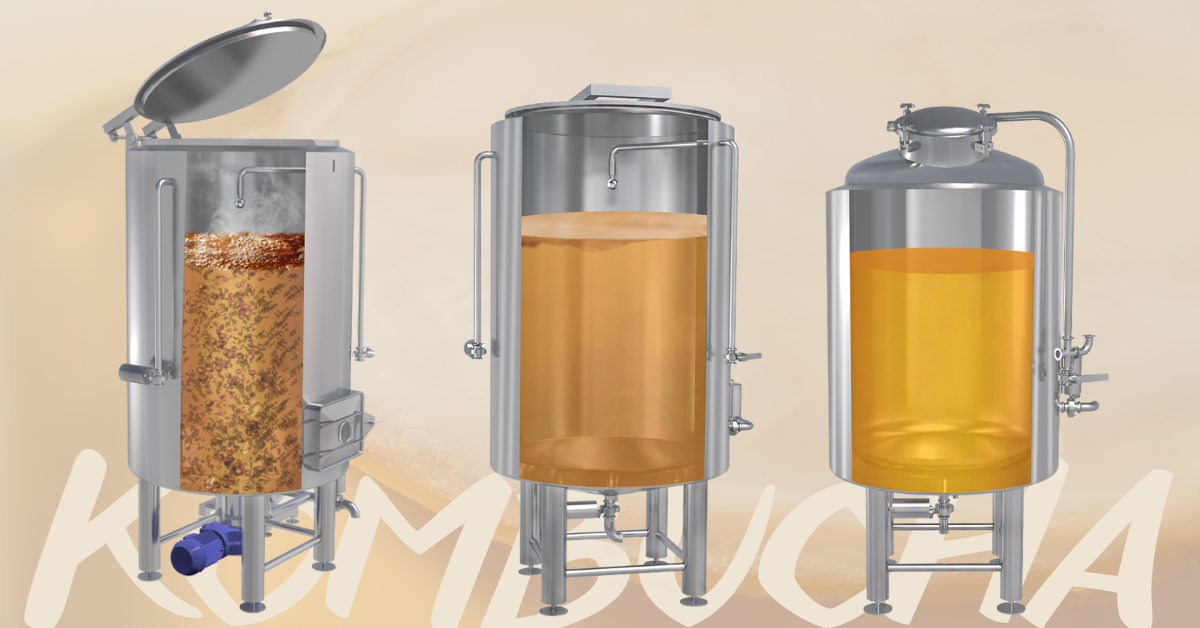Kombucha has rapidly moved from niche health drink to mainstream favorite, celebrated for its tangy taste and functional benefits. But scaling up production from kitchen experiments to a full commercial brewery is not as simple as multiplying the recipe. Fermentation is a living process, and without the right systems in place, small problems can quickly escalate into major setbacks.
Understanding these challenges is the first step in building a kombucha brewery that is not only profitable but also safe and consistent.
The Key Risks in Commercial Kombucha Brewing

Contamination and Food Safety
Kombucha thrives on a symbiotic mix of yeast and bacteria, but that same vitality leaves it vulnerable. If unwanted organisms such as molds or wild yeasts gain a foothold, an entire batch can be lost. In large-scale operations, that may mean thousands of bottles discarded. Sanitary surfaces, well-designed tanks, and a facility built with cleaning in mind are critical safeguards against this risk.
Alcohol Compliance and Dealcoholization
Although kombucha is usually marketed as a non-alcoholic beverage, natural fermentation always produces some alcohol. Left unchecked, levels can creep above legal limits, leading to compliance and labeling problems.
Producers typically address this in two ways:
- Prevention: Careful control of fermentation temperature and timing helps keep alcohol levels within range.
- Correction: When needed, dealcoholization methods such as vacuum distillation, membrane filtration, or controlled evaporation can bring alcohol content down while preserving the drink’s flavor and aroma.
For commercial brewers, having a dealcoholization capability adds a layer of security, ensuring regulatory compliance while protecting product quality.
Product Consistency
Consumers expect their favorite kombucha brand to taste the same every time. Variability in fermentation can produce batches that are overly sour, too sweet, or inconsistently carbonated. Reliable fermentation control and stable equipment are essential to maintaining the balance of flavor and fizz that defines a brand’s identity.
Over-Carbonation and Packaging Hazards
Because kombucha continues to ferment if not stabilized, carbonation can climb quickly once the drink is bottled. Without proper safeguards, bottles and cans may over-pressurize, creating safety concerns during storage and distribution. Pressure management and well-engineered tank systems help reduce this risk.
Inefficient Operations
Commercial kombucha production involves multiple stages—brewing, cooling, fermenting, flavoring, and packaging. If the layout is poorly designed or the equipment doesn’t fit the process, bottlenecks develop. The result is slower throughput, higher costs, and limited ability to scale. A facility designed with efficiency in mind avoids these problems and supports long-term growth.
Turning Risks Into Opportunities
The challenges of commercial kombucha brewing are real, but they can be managed with the right approach. Successful producers rely on thoughtful design, dependable equipment, and sound process control to transform risks into strengths.

- Hygienic design: Stainless steel tanks with smooth welds and sanitary finishes help prevent microbial buildup and simplify cleaning.
- Temperature stability: Jacketed fermenters provide accurate control, keeping fermentation in safe ranges and reducing alcohol spikes.
- Streamlined cleaning: Built-in CIP (clean-in-place) systems save time while ensuring every surface is properly sanitized.
- Alcohol management: Inline monitoring and dealcoholization options provide flexibility and peace of mind in meeting compliance standards.
- Workflow planning: A smart layout minimizes cross-contamination and keeps production moving efficiently.
- Future-proofing: Modular systems enable easy expansion as demand increases.
These measures aren’t extras—they are the backbone of safe, reliable, and scalable kombucha brewing.
Building for the Future of Kombucha
Kombucha’s popularity shows no signs of slowing down. The producers who thrive will be those who pair creativity and flavor innovation with professional brewing practices. That means facilities built for hygiene, consistency, and regulatory compliance from the very beginning.
By combining precise fermentation control with dealcoholization options, brewers can protect their brands from contamination, compliance setbacks, and quality fluctuations. Just as importantly, they create a foundation for growth—ready to meet rising demand without sacrificing safety or taste.
